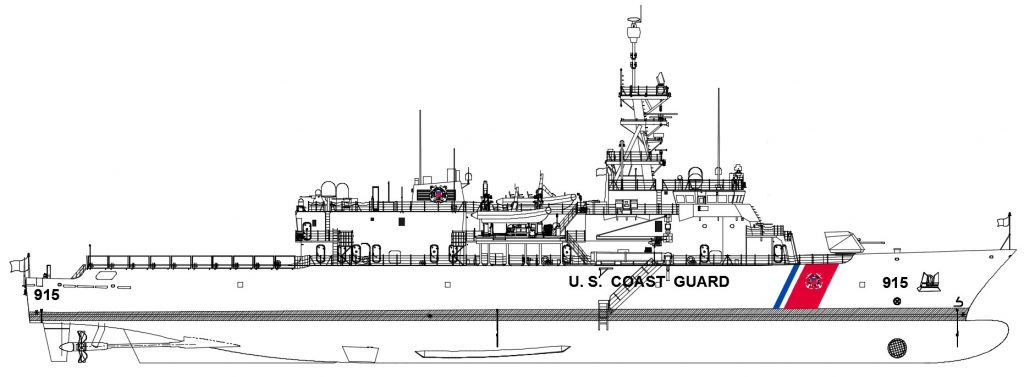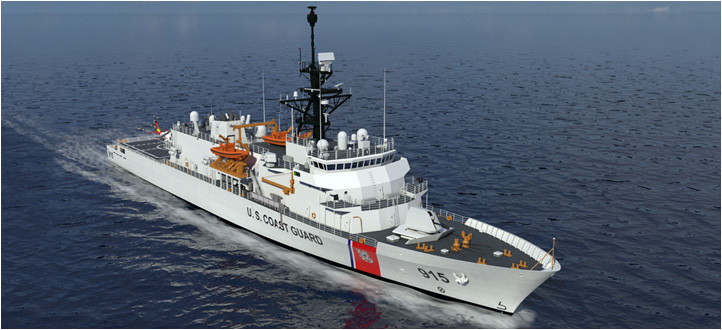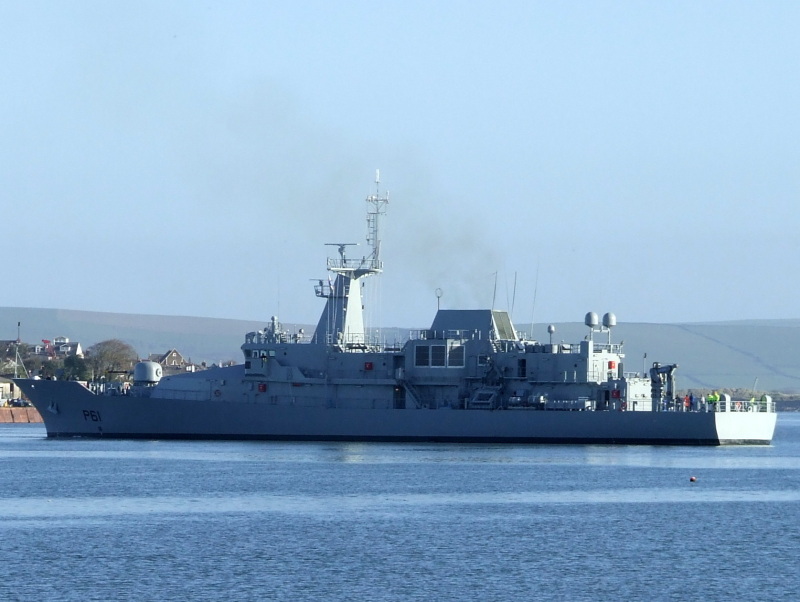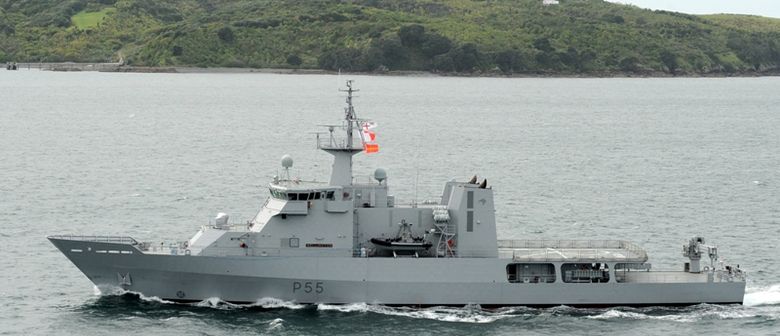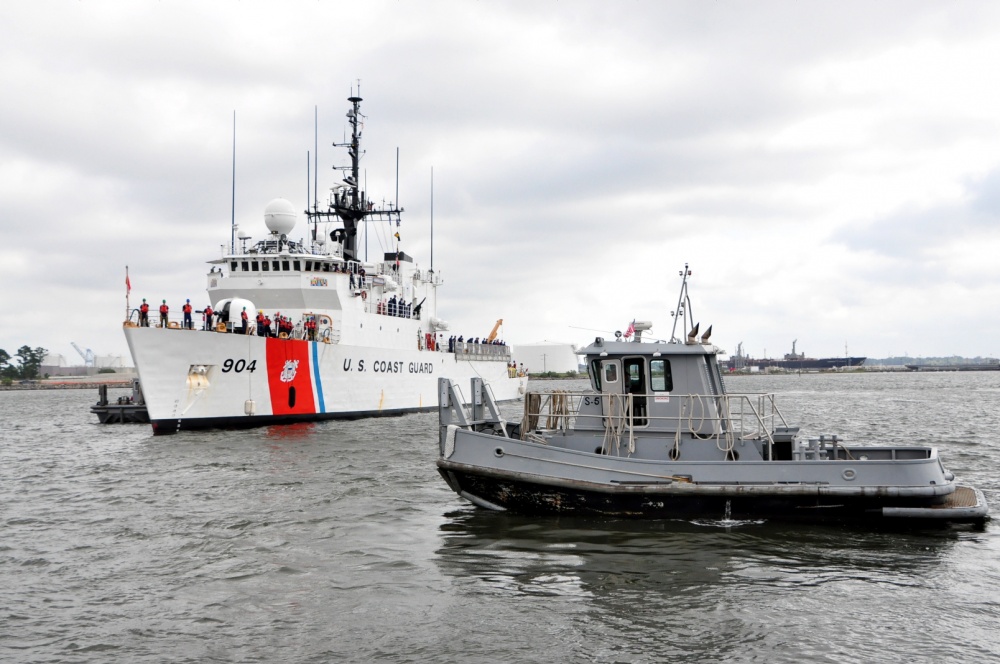Bollinger Looks to Get a Slice of that Sweet, Sweet OPC Pie
With as many as 25 of the Coast Guard’s 4,500-ton/360-foot new Heritage-class Offshore Patrol Cutter/Maritime Security Cutter, Medium set to be built (don’t be surprised if the number of hulls increases) a big name in the USCG build game is trying to get in on the action.
New Orleans-based Bollinger and the Coasties go way back, delivering 170 vessels in the last three decades, all of which have had a long and (mostly) successful history. This includes the 110-foot Island-class (49 delivered), the 87-foot Marine Protector class (77 delivered), and now the 158-foot Sentinel-class (44 of 64 delivered to date). The yard also built the Navy’s Cyclone-class patrol ships (14 delivered) in the 1990s and is building the 5,100-ton/263-foot Navajo-class rescue and salvage ships (7 building) as well.
Now, the yard wants to step up to the larger cutters and has submitted a package to get in on the second flight of 11 OPCs, vying against Eastern Shipbuilding in Panama City, a largely commercial tug/supply boat company, that is building at least the first two of the initial flight of 11. The ships are projected for a rapid build-out with the Coast Guard expecting the first 22 by the early-to-mid 2030s, which sounds far away but really isn’t.
They will be replacing the 30-to-50-year-old 1,300-ton, 210-foot Reliance-class and 1,800-ton, 270-foot Famous-class medium-endurance cutters, which, along with the circa 1967 former Navy Edenton-class rescue ship which has been serving as USCGC Alex Haley (WMEC-39), amount to some 30 hulls.
“Bollinger is the right shipyard at the right time to build the Offshore Patrol Cutter program for the U.S. Coast Guard,” said Ben Bordelon, Bollinger President and CEO. “Our long history building for the Coast Guard is unparalleled and has shown time and time again that Bollinger can successfully deliver the highest quality vessels on an aggressive production schedule.”
Bollinger was a contender in every step of the U.S. Coast Guard’s OPC acquisition process, including the execution of the Stage 1 Preliminary and Contract Design, where the company was included in the final three shipyards, as well as execution of the OPC Stage 2 Industry Study.
The OPCs are essentially a scaled-down light frigate, with lots of commonality sensor and weapon-wise with the Navy’s LCS and planned new Constellation-class FFGs, as well as the Coast Guard’s larger National Security program cutters.
This includes the BAE Mk110 (Bofors’ 57Mk3, which uses an interesting Mk295 3P fuzed ammo), an SPS-77 (Saab Sea Giraffe) 3D radar with gun cueing so that the 57mm can be used for AAA/anti-missile defense, a stabilized Mk 38 25mm gun (that can be upgraded to a 30mm or 50mm barrel on the same mount), two stabilized .50 cals and four good old M2s. Northrop Grumman was just named the systems integrator for C5ISR and control systems. They can interface with the fleet via Link 22 and have IFF/TACAN systems.
There is also weight and space available for anti-ship missiles and a CIWS and they can carry an HH-60-sized helicopter which means, in a pinch, they can support an Oceanhawk/Seahawk and a UAV at the same time due to a large hangar.
The Sea Giraffe AMB has proved successful on the Independence-class LCS (the variant that seems to be having fewer issues) as well as the Swedish Visby class corvettes, Canadian Halifax-class frigates, Singapore’s Victory-class corvettes et. al. while the Bofors gun is used both far and wide overseas and the Navy is looking to up the lethality of that program as well since they are installing it on the Constellations.

Pascagoula, Miss. (Feb. 11, 2008)- The MK 110 57mm gun was fired off the bow of the Coast Guard’s first National Security Cutter, Bertholf, on Feb. 11 during sea trials (Northrop Grumman photo)

The 57mm’s 13-pound 3P Mk 295 Mod 0 cartridge projectile section delivers over 8,000 pre-formed tungsten fragments in reaction to 420 grams of PBX-explosive. It has a range of “at least” nine nm. (BAE)
The OPC also has lots of soft kills such as a newer version of the Slick 32, Nulka, and other countermeasures.
The program should prove interesting and could contrast well against the LCS debacle.

